So, Your Boat was in Storage? What Steps to Take Next.
Posted by Pacer on 2nd Feb 2021

If your boat has sat up for an extended period, you will need to take care of some maintenance before you put it back on the water. When a boat sits idle for too long, it tends to cause more problems than expected. One reason for this is that boats are often left outside long term. Now, this might not seem like such an issue, but when it comes to steering, belts, trim, and other moving parts, the constant elemental exposure can cause them to stiffen or even seize up. The good thing is that unless your boat has sat up for several years, chances are pretty good that a little elbow grease and some deep maintenance will correct any underlying issues. We are going to look at some of the most common maintenance issues and how to address them.
Download our Checklist to make keeping track of maintenance even easier
Note: This list is not comprehensive as each boat is unique and has specific needs. This list is meant as a starting point for annual maintenance and will hopefully make you more aware of issues that you may have previously overlooked.
"Chances are pretty good that a little elbow grease and some deep maintenance will correct any underlying issues."

1. Check engine oil and fluid levels
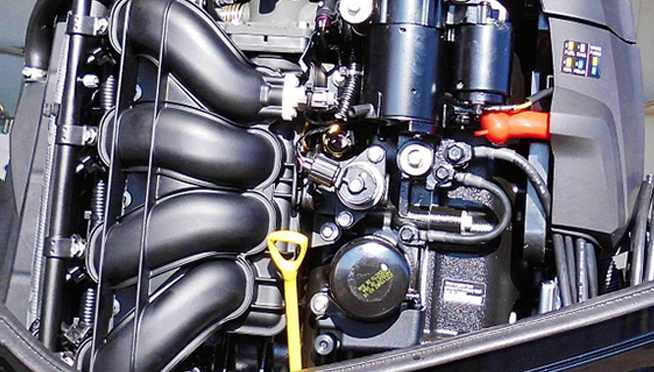
Many people change the oil in their boat before storing it for an extended period. If you have already changed it, it is still a good idea to check the levels and consistency of the oil. This is a good way to check for slow leaks. If you did not change your oil prior to storing your boat, do it now. The oil is needed to keep quickly moving parts from damaging each other. I cannot stress the importance enough. One important thing to keep in mind to make sure that you do not overfill the oil. Keep with your motor’s specifications and add the exact amount.
Once your engine oil has been taken care of, move on to any other fluids. This includes power steering fluid, hydraulic fluids, and any other possible fluids your boat may have. Ensuring that all fluids are filled to the proper level is essential to a properly running motor. Just as with the motor oil, be sure not to overfill any fluids.

2. Inspect the propeller
Your propeller is what moves your boat through the water. Any issues will likely leave you dead in the water. When inspecting your propeller there are three main areas to look at: the blades, shafts, and hubs.
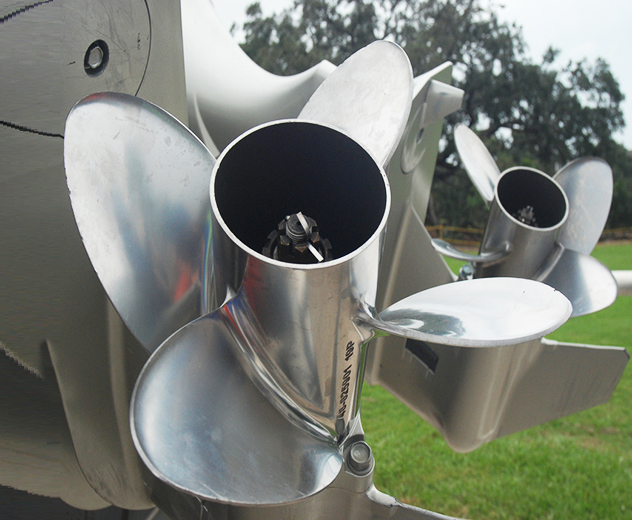
Blades:
The most obvious one is the blades. Carefully look for missing chunks or dents
as well as deep scratches or gouges. Another thing to look for is bends in the
blades. One important part of propellers operation is balance. If one blade has
significant damage, it can throw the propeller off balance which, over time,
can cause catastrophic damage to the engine itself.
Shafts:
When inspecting the shaft, you want to look for any
bends. One way to identify a bend is to
rotate the shaft by hand and look for a wobble. If you do find a bend in the
shaft, you will want to take the boat to a repair shop as that bend may have
damaged seals, bearings, and couplers. If the blades were in good shape with no
damage, then the shaft is likely okay.
Hubs:
Hubs are pieces that fit over the shaft and connect to the
propeller. The whole purpose of the hub is to absorb some of the impact if the
propeller strikes another object. Often times, especially with older boats, the
hub is made out of rubber. Every if it has never sustained damage, it may need
to be replaced depending on the age. Check if for damage and replace if you are
unsure.
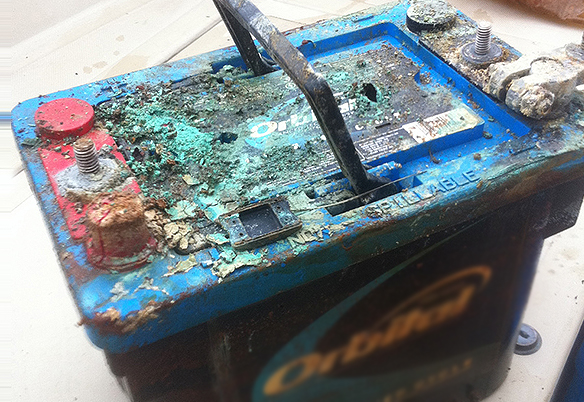
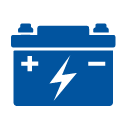
3. Test and clean the battery
The first step when cleaning a battery is to inspect for leakage or outside damage. If you find a leak, it is time to replace the battery. If there are no cracks or damage, then a good wipe down will go a long way. This isn’t a deep clean, just clean enough to do a thorough inspection. Be sure not to leave any harsh chemicals sitting on the battery itself. Wipe away any residual chemicals and inspect the battery again. Once clean, you may see something you didn’t notice before. If everything looks good and the battery is fully dry, test the voltage on the battery. Another thing to test for is the specific gravity of the battery. The specific gravity test will describe the density of the fluids in relation to the water in the boat’s battery. The easiest way to test this is to use a hydrometer and make sure the number is equal to or below 1. If the number is greater than one that indicates that the liquid inside the battery is denser than the water. If everything is good, deep clean the battery and you’re good to go.
"Be sure not to leave any harsh chemicals sitting on the battery itself."

4. Test all electronics
When a boat has been stored for a long period, corrosion can build on the contacts which can reduce conductivity and prevent certain electronics from functioning. A simple method is to just turn everything on, one at a time, and make sure that they work properly. Look for dimmed lights or displays on equipment which may indicate that the connection is not functioning at full capacity. If you do find an issue, look at the connection points and inspect for damage or corrosion. Sometimes, just using a little sandpaper on the separated contacts can make the connection point connect better. If the issue persists it could be either the equipment itself, the battery (which we already tested), or the wires. Isolating the issue is the next step. This part may require the assistance of a professional.


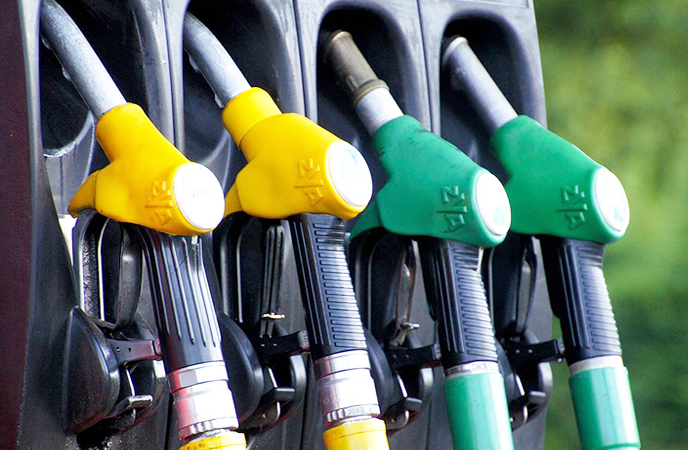
5. Inspect the fuel, lines, and connections.
Fuel, no matter the type, is a caustic chemical. It will wear parts away including tubes and seals. Hopefully, you drained all the fuel from the tank and lines before you stored your boat. Start by looking at the fuel tanks, tank surfaces, hoses, and connections for leaks or damage. Check hoses by squeezing and feeling for brittleness or cracking. After you inspect all areas of the fuel system, add a small amount of the properly mixed fuel, and pump it through the system. This will help to identify any pinhole cracks you may have missed. If you find any leaks, replace that part before moving one. A good rule is to replace all the lines at once. The logic is, if one has cracked from age, the others are already on their way out.

6. Check distributor, plugs, and carburetor
Spark plugs and the distributor are subject to damage that you may not find on other parts of your boat’s motor. Start by unplugging one spark plug and removing it. Check the inside of the wire and the body of the spark plug. If everything is okay, replace the plug and put the wire back on. It is important to remove the plugs one at a time and replace them. If you take out all of the plugs at once, you may run into trouble remembering which wire goes to which plug. This can be catastrophic if you put the wrong wire on the wrong plug. A misfiring engine will not last long. Once you have checked all the plugs and wires, move on to the carburetor. You may need a guide for this as a carburetor is a very complex piece of equipment.
"It is important to remove the plugs one at a time and replace them. If you take out all of the plugs at once, you may run into trouble."
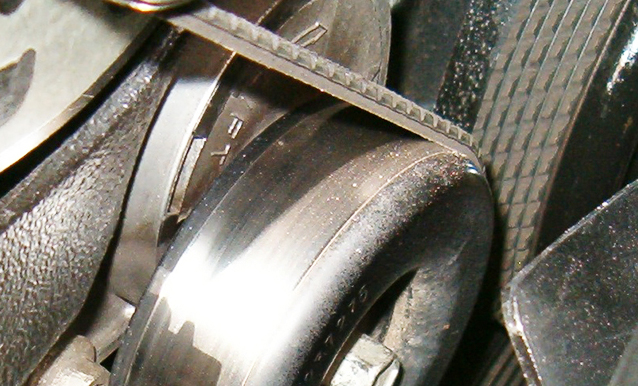

7. Looks at all belts
All belts should sit fairly tight and have little give. Manually move a belt back and forth and look for cracks or signs of damage. If you see any cracks, it is time to replace the belt. Another thing to look for is dust from the belt. If you run your hand on the underside of the belt and get large amounts of belt dust on your hand, you will need to replace it. If a belt is loose, gently move the objects the belt is attached to. Sometimes parts can come loose which can make a belt slip. If you find a loose piece of equipment, make sure to align it back into its proper location and tighten the bolts fully. Remember, it’s a good idea to keep spare belts on your vessel just in case of an emergency.

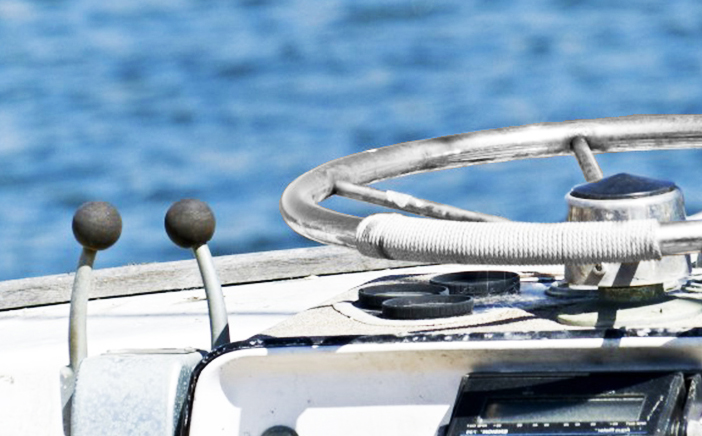
8. Check steering
If you have followed this guide, then you have already checked your power steering fluid so we will skip over that. The first thing you will want to do is to check the steering system for excessive play. What this means is that your steering wheel should move back and forth but not too much. If it feels wrong, it probably is. Loose steering will not only make driving the boat more difficult, but it also indicates a likely issue with the linkage system. If you have a hydraulic system, make sure to inspect the lines for cracks, aging, or other signs of damage. These are obvious signs that something needs to be replaced. Another thing to inspect is the lubrication of your steering system. This can be located in a few different areas so be sure to check with your owner’s manual. Once you are confident that everything is good, give the wheel a full side to side turn. That means turn it in one direction fully until the motor will not go any further, then repeat in the opposite direction.
"Loose steering will not only make driving the boat more difficult, but it also indicates a likely issue with the linkage system."
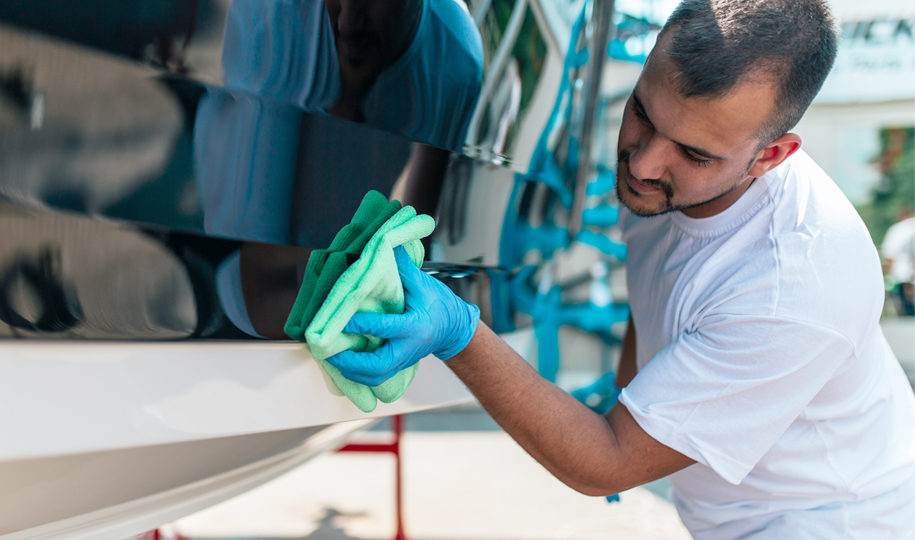

9. Inspect the hull
This step is maybe the most obvious of all. Carefully look over the outside and inside of your boat and look for any signs of damage. Always be sure to inspect the bottom which gets the least amount of visibility. One trick is to lightly tap the hull with a rubber mallet and listen for a consistent sound. If one area sounds dramatically different, it may be a sign of a damaged hull. Look for issues near the molding or other connections points and make sure to look at every inch of the hull. If you sign cracks, dents, gouges, or other signs of damage, you need to address those before you put the boat into the water. Oftentimes, the fiberglass hull can begin to crack slightly just from age so be sure to consider the age of your boat when inspecting the hull body.

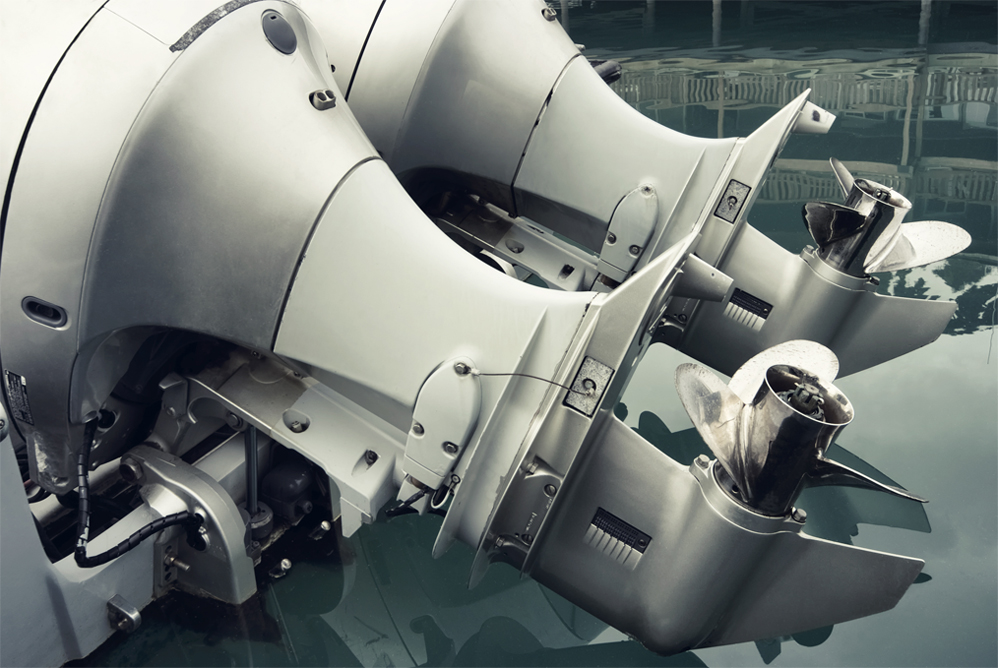
10. Start the engine
Once all of these steps are complete, check your boat for any areas we may have not mentioned. Each boat is different and may want to inspect your bilge areas, pumps, transom, etc. After you have checked everything you can think of and it all passes the test, it’s time to start the engine. Using the proper muffs, hook water to your motor and make sure the area is clear of people or objects. With the area clear and the water running, crank up the engine and listen for unusual sounds. Also, keep an eye out for unusual smoke as these things indicate an issue. If either of these things occurs, shut the motor down and take it to a repair shop. Let the motor warm-up and run for a bit to ensure there are no lingering issues. Once done, you are ready to put your boat into the water.
Other consideration:
With the list done and your boat ready, make sure to check your supplies. This includes safety equipment, flares or sirens, your first aid kit, spare parts, and your tools. These simple things can save you in the long run. Happy boating.
Download our Checklist to make keeping track of maintenance even easier
Note: This list is not comprehensive as each boat is unique and has specific needs. This list is meant as a starting point for annual maintenance and will hopefully make you more aware of issues that you may have previously overlooked.

